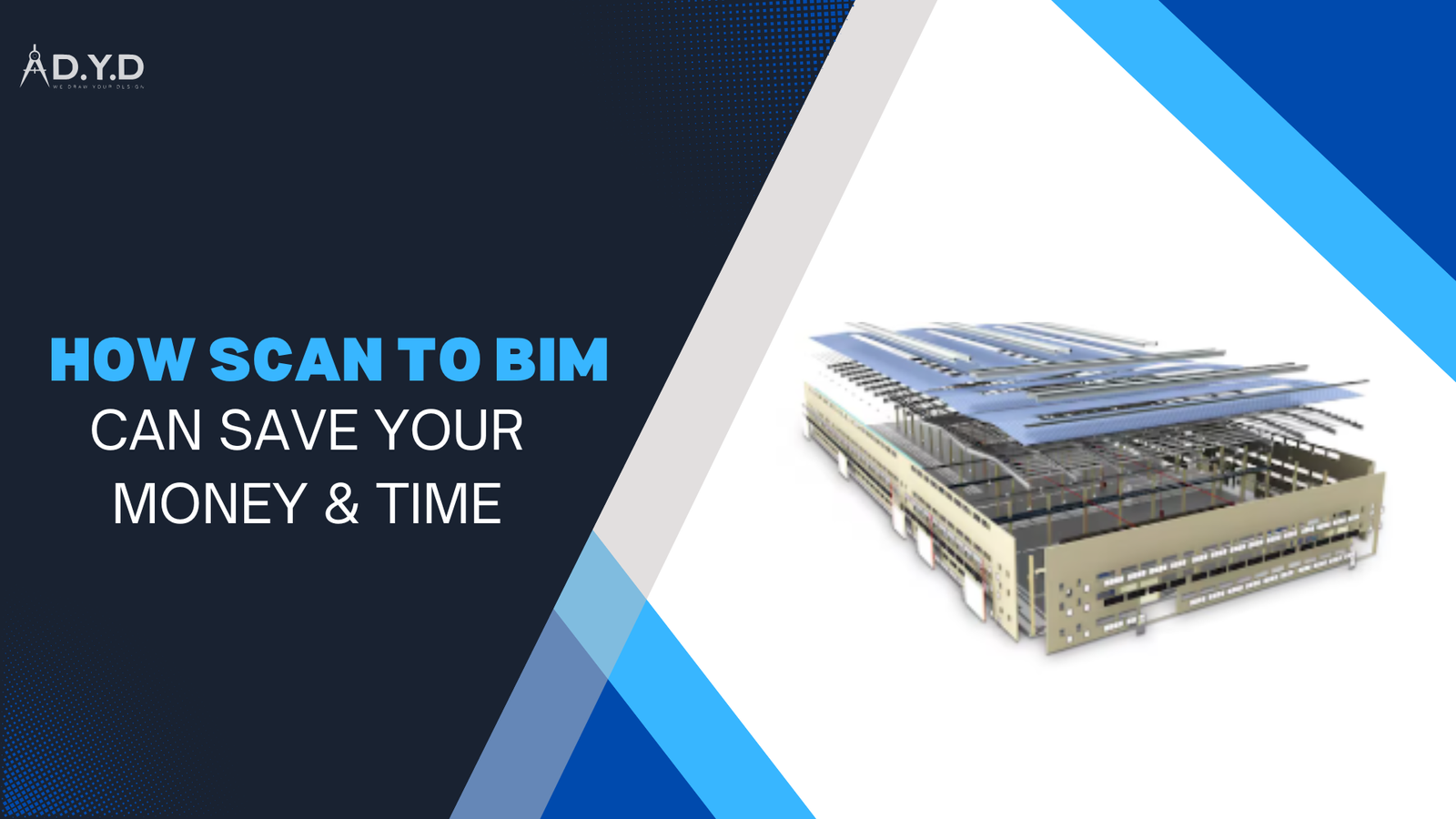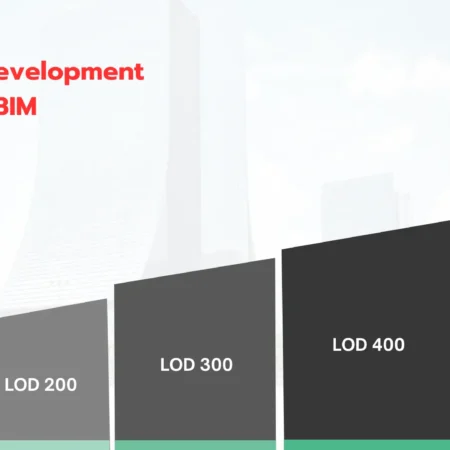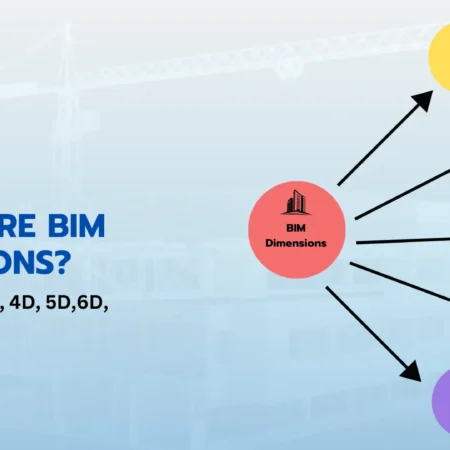
The construction and architecture industries are still growing in their sectors by incorporating better technologies to complete tasks and make it cheaper. Such are developments like one that has given AEC industry specialists a new name—Scan to BIM.
Think of it as the power of having too much technical endowment for converting hard-to-crack, long outmoded procedures into efficient procedures that save your greenbacks and time. It is exactly what that is. In this guide, it is going to explain how this technology functions, what the advantages are, and how companies are using it to mitigate some of the sector’s problems that you need to follow the market.
What is Scan to BIM?
Scan to BIM is a process of capturing existing physical structures or environments as a 3D information model by the use of laser scanning technology. This model, in this sense, can be treated as a digital representation of the structure with its geometry details and functional elements.
This innovative process guarantees high accuracy in the representation of existing conditions. This BIM model is enriched with details such as materials, dimensions, and structural features and is invaluable for renovations, retrofits, or new constructions. It is integrated with BIM and can help reduce project workflows and inform decisions.
How to Perform Scan to BIM
This technology has several steps involved in performing, which ensures accurate data collection and also efficient model development. Here’s a breakdown:
- Laser Scanning: Existing structures or sites are captured as point clouds, using advanced laser scanners to do so. According to these scanners, millions of data points are measured with high precision, giving us an accurate digital version of the physical environment.
- Point Cloud Processing: This point cloud data is collected, processed, and cleaned of noise or irrelevant info. Thus, this makes sure that the data is clean enough to use for the modeling process, skipping past this stage.
- BIM Modeling: The point that cloud data goes through the processing so we get highly informative data is the BIM model. Tools like Autodesk Revit are used by professionals to integrate architectural, structural, and MEP (mechanical, electrical, and plumbing) details into the model to meet project-specific requirements.
- Validation and Quality Control: To achieve this, the final BIM model is heavily validated against built site conditions. This step enables us to ensure that the model reaches the required level of detail for BIM. This allows professionals to bridge the gap between physical structures and digital models and better collaborate.
What is the value of BIM in the AEC industry?
The AEC industry relies so heavily on accurate and efficient workflows to complete projects on time and within budget that it’s of absolute importance that we maintain and promote industry standards. Here’s how Scan to BIM technology adds value:
- Enhanced Collaboration: It harmonizes the various discipline BIM models to a centralized platform for stakeholders to work on seamlessly. With this, everyone is working on the same up-to-date and accurate information throughout the project life cycle, eliminating miscommunication.
- Reduced Rework and Errors: Existing site conditions can be captured with high precision using accurate laser scanning, greatly reducing the possibility of errors. It keeps from requiring costly rework during construction or renovation phases and saves both time and resources.
- Optimized Project Planning: It incorporates highly detailed and accurate existing conditions to give realistic scheduling, efficient resource allocation, and better budget management on successful project execution.
Problems That Scan to BIM Can Solve
It tackles several challenges faced by the construction and design industry.
- Inaccurate As-Built Documentation: Some existing structures are too difficult to document, or the traditional methods of doing so are too imprecise. Detailed and precise documentation from this tool gives reliability to on-site conditions.
- Time-Consuming Renovation Planning: Manual capture of existing conditions for renovation or retrofit projects can be a very laborious and error-prone task. It also speeds up this process through high-speed, accurate data collection, which saves a lot of time.
- Coordination Issues Among Teams: The reason is that the teams aren’t aligned. Laser scanning of the facility generates BIM models that are shared by all stakeholders with the same accurate and reliable data, and coordination is effortless.
Why Accuracy Matters in Scan to BIM
The use of BIM models can directly impact the accuracy, and therefore the usability and success of the project. The precision of laser scanning ensures that the models created with this technology are very reliable and mirror site conditions. For large-scale projects, which is often the case, even a slight error can have a big negative impact on cost and time, so it’s particularly important.
Project-specific requirements are met using accuracy. For example, maintaining the right level of detail in BIM so that the model is not overloaded with unnecessary information nor lacking essential data. This equilibrium allows for a cleaner project execution by allowing stakeholders to always have just the right amount of detail at each stage.
Additionally, accurate Scan to BIM models provide an accurate representation of existing conditions in order to assist with decision-making. This accuracy ends guesswork for renovation, retrofit, or new construction; planning and resource allocation between the parties are all better. Of course, it allows teams to work better, as everyone can see the same reliable, consistent data.
Then, precision in these models reduces the risk of errors and rework. The process captures every detail accurately, thereby minimizing disruption to construction and ensuring that projects stay on schedule and within budget. As a result, it is highly valuable to the modern BIM process to focus on accuracy through its use.
Conclusion
The Scan to BIM approach to construction and design projects continues to be rapidly adopted within the AEC industry. By integrating state-of-the-art laser scanning technology with the BIM process, this method achieves extremely accurate, efficient, and low-cost results. As it does say on the tin, it solves many of the traditional pain points in project planning and execution and is a key resource for professionals.
Creating precise and detailed 3D models from existing structures is not only time-saving, but it also saves costs by reducing guesswork and rework. Additionally, the BIM model is a collaborative, largely transparent tool that promotes informed and consistent decisions among teams throughout the project lifecycle.
Regardless of whether it’s a renovation, retrofit, or new construction, it has the tools you need to thrive in the competitive marketplace of today. Get on board with this technology to improve your workflows, increase your project outcomes, and stay competitive in the dynamic AEC market.
FAQs:
- What is Scan to BIM?
Scan to BIM is the process of converting laser-scanned data into a 3D Building Information Model (BIM) for accurate design and construction workflows. - How does Scan to BIM save time?
It accelerates data collection, reduces on-site visits, and eliminates manual surveying, speeding up project timelines. - How does Scan to BIM reduce costs?
By minimizing errors, rework, and unnecessary material use, it significantly cuts project expenses. - Can Scan to BIM improve project accuracy?
Yes, it provides highly detailed as-built models, ensuring precision and preventing design clashes. - Is Scan to BIM suitable for small projects?
Absolutely! It enhances accuracy and efficiency for projects of any size, from homes to large commercial buildings. - How does Scan to BIM help with renovations?
It captures existing conditions, creating a precise base model that ensures better planning and cost control during renovations.



